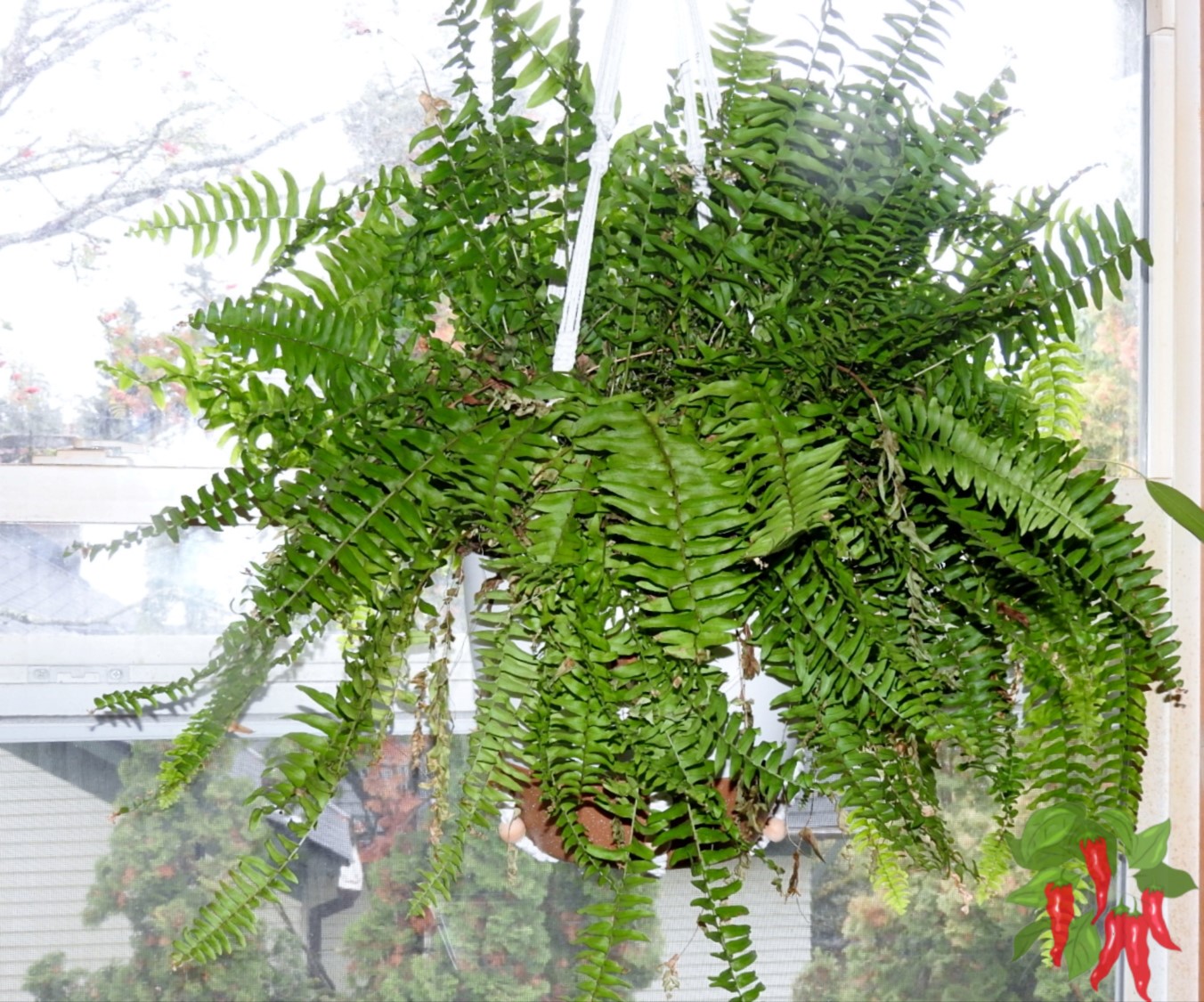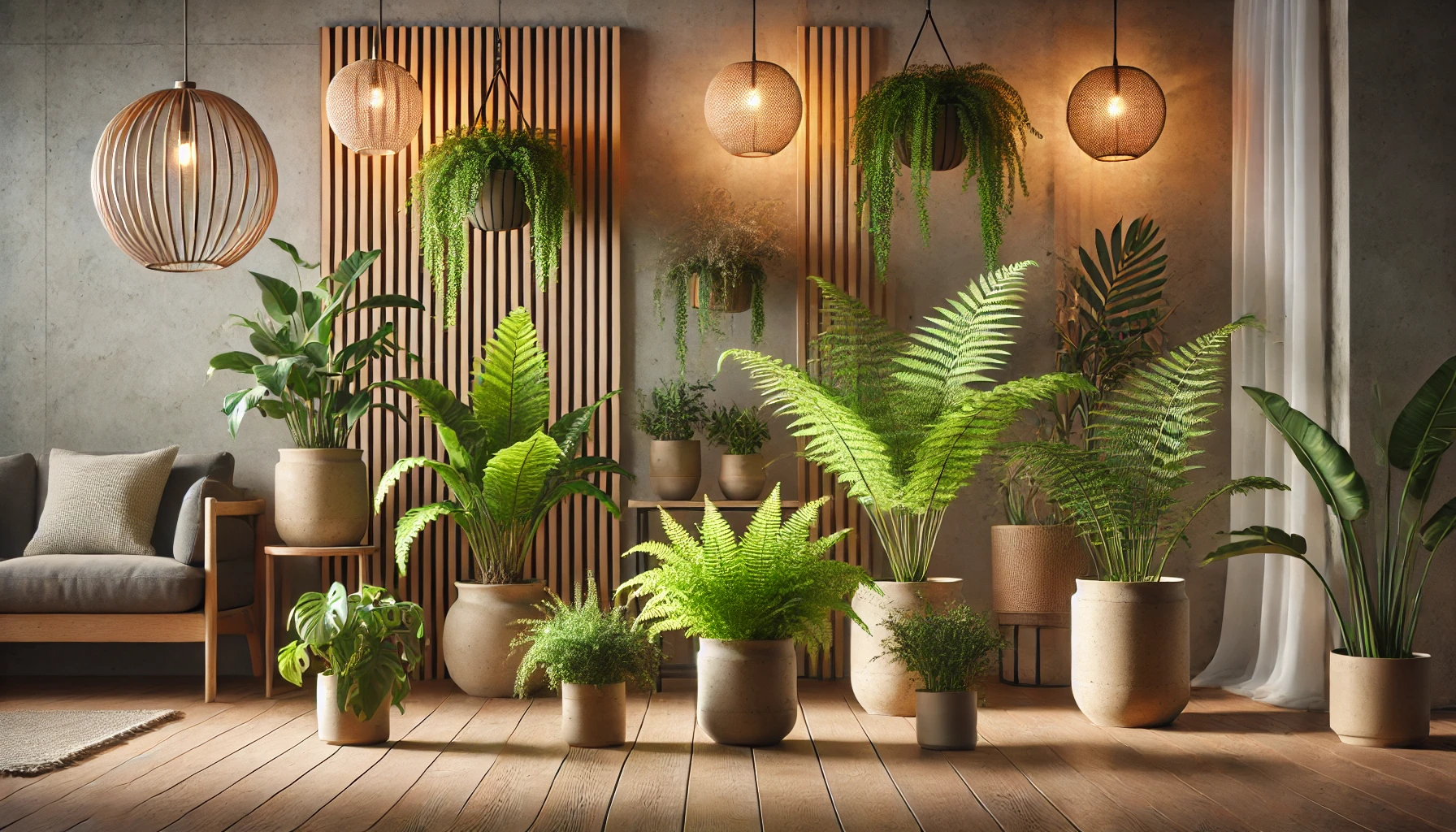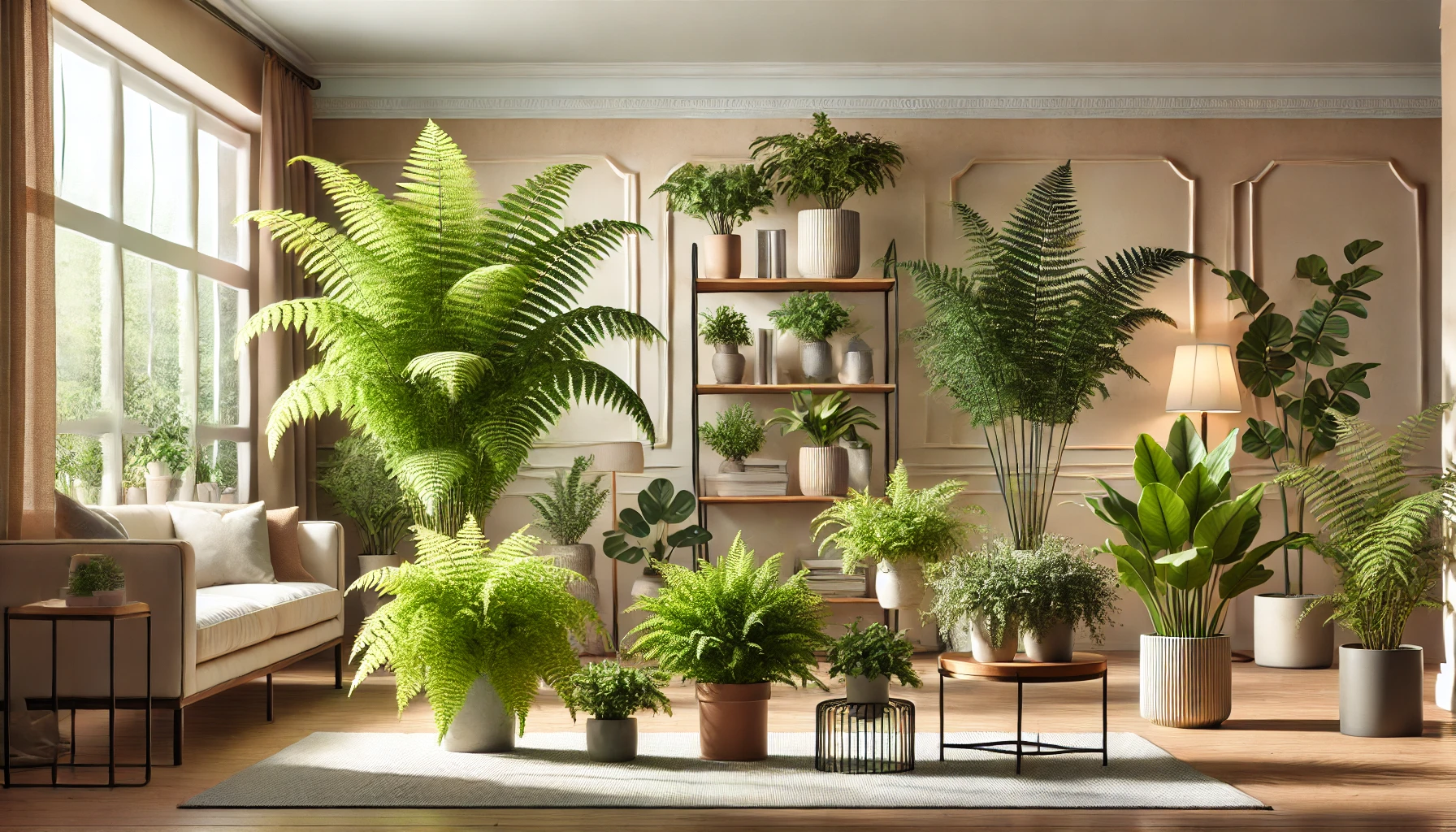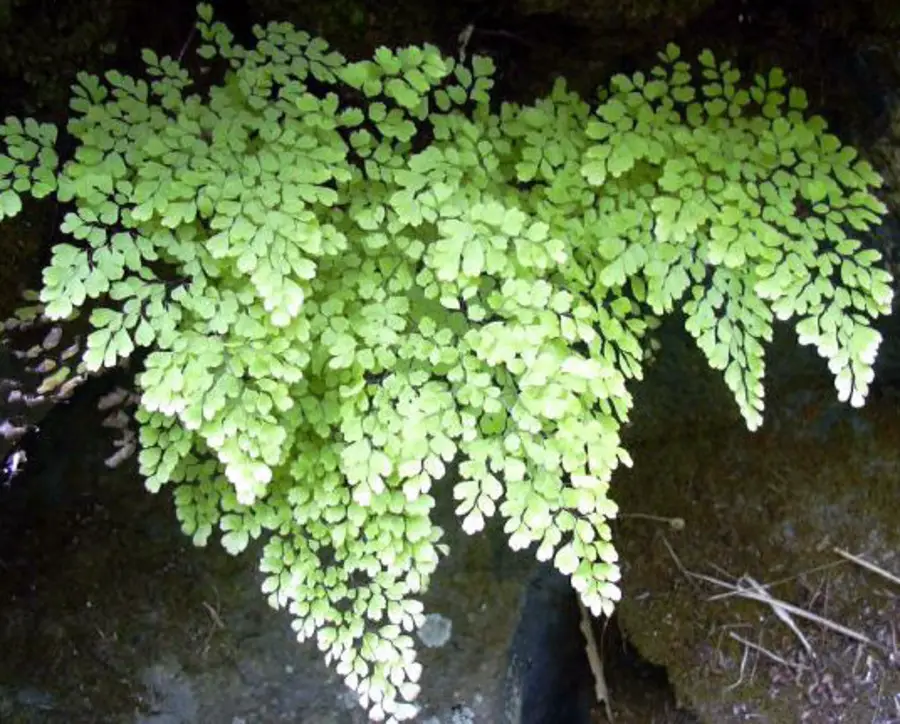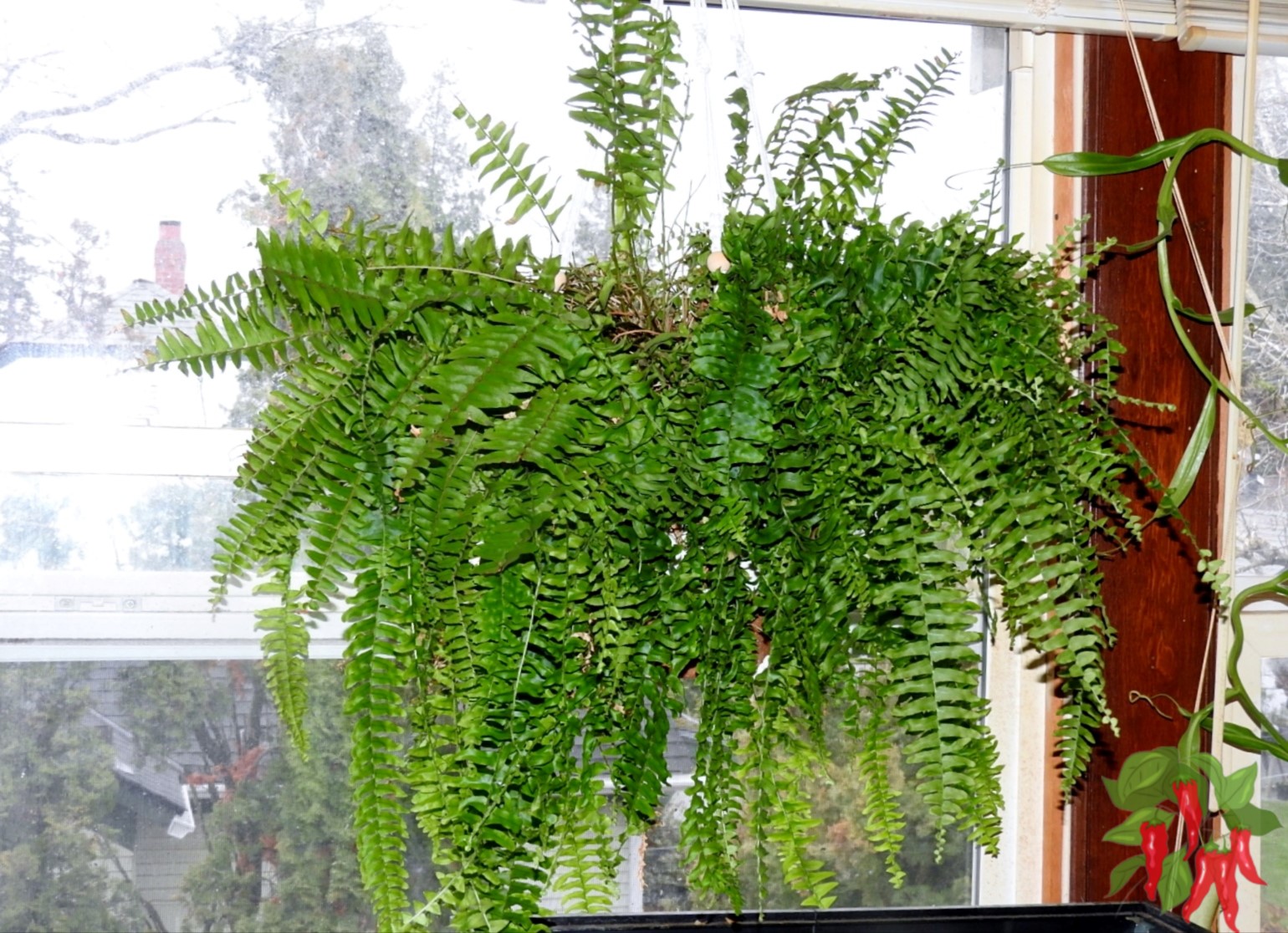This post contains affiliate links. If you buy something from one of our links we may earn a commission. Thanks
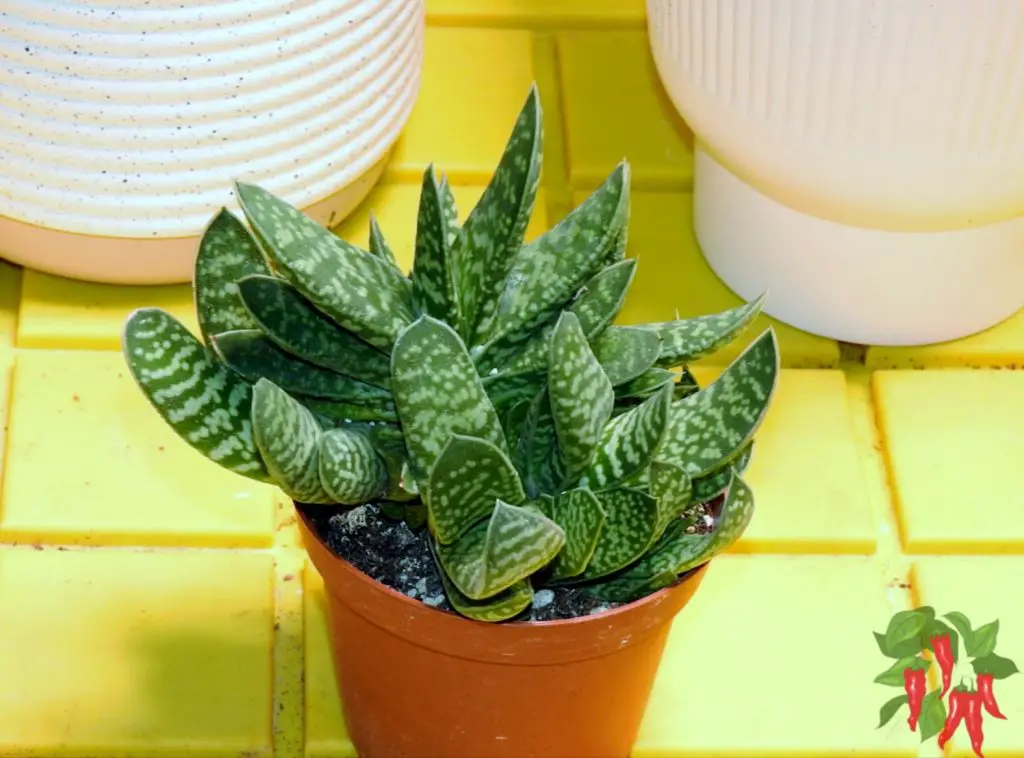
Learn how to grow Gasteria with expert tips on watering, light, and soil needs. Discover simple care techniques to help your Gasteria thrive indoors!
How To Care for Gasteria Key Takeaways
- Growing Gasteria requires bright indirect light, well-draining soil, and moderate watering.
- Keep them in temperatures between 60-80°F with low to average humidity.
- Water when soil is completely dry, and use a 50% coco coir and 50% perlite succulent potting mix for best results.
How To Grow Gasteria: Complete Care Guide for Success

4-Inch Rooted Gasteria Pillansii Succulent Plant – Live Indoor Houseplant, Easy Care, Unique Decorative Plants for Home or Office
Growing Gasteria might seem tricky at first glance, but these fascinating succulents are actually some of the most forgiving plants you can grow.
Often called “lawyer’s tongue” for their thick, tongue-shaped leaves, Gasteria offers unique charm without demanding much attention.
How To Grow Gasteria Video
Gasteria Plant Care Reference Guide
| Characteristic | Details |
|---|---|
| Common Name | Gasteria |
| Botanical Name | Gasteria spp. |
| Native Habitat | South Africa |
| Plant Type | Succulent |
| Growth Pattern | Rosette or clumping; slow-growing |
| Mature Size | 4–12 inches tall, 4–10 inches wide |
| Watering | Water sparingly; allow soil to dry out completely between waterings |
| Light/Sun Exposure | Bright, indirect light; tolerates low light |
| Soil Type | Well-draining soil; cactus or succulent mix with coco coir and perlite |
| Soil pH | Neutral to slightly acidic (6.0–7.0) |
| Temperature | 60–85°F (15–29°C); avoid frost |
| Humidity | Low to moderate humidity; prefers dry conditions |
| Bloom Time & Flower Color | Typically blooms in late winter to spring; tubular pink or orange flowers |
| Potential Problems | Root rot (overwatering), etiolation (insufficient light), mealybugs |
| Repotting | Every 2–3 years or when root-bound |
| Hardiness Zones (USDA) | Zones 9–11 |
This table summarizes the essential care requirements for Gasteria succulents, offering a quick reference for their successful growth.
Understanding Gasteria
These fascinating succulents from South Africa have been capturing the attention of plant enthusiasts for generations.
With their thick, tongue-like leaves and interesting growth patterns, Gasteria bring a unique architectural element to any plant collection.
Their natural ability to thrive in challenging conditions makes them perfect for both novice and experienced growers.
Origin and Natural Habitat
Gasteria’s natural home tells us a lot about how to care for them:
• Native to South Africa’s Eastern Cape
• Often grow in semi-shaded areas
• Found beneath shrubs and rocks
• Adapt to various soil conditions
• Survive seasonal drought periods
Distinctive Features
What makes Gasteria special:
Leaf Structure
• Thick, tongue-shaped leaves
• Often covered in white spots or bands
• Leaves grow in opposite pairs
• Smooth, mottled, or textured surfaces
• Colors range from deep green to reddish-brown
Common Species
• Gasteria ‘Little Warty’ – Small with raised bumps
• Gasteria bicolor – Two-toned leaves
• Gasteria flow – Compact with dark green leaves
• Gasteria carinata – Boat-shaped leaves
• Gasteria nitida – Glossy, smooth leaves
Growth Patterns
• Slow but steady growth
• Rosette formation
• Produces offsets (pups) readily
• Can form dense clusters over time
• Often grows at an angle
Benefits of Growing Gasteria Indoors
Adding a Gasteria to your indoor space offers more than just good looks. These hardy succulents bring several advantages that make them excellent houseplants.
Whether you’re adding it to a sunny windowsill or brightening up your office desk, Gasteria can enhance your space in multiple ways.
Air Purification
While not as studied as some other houseplants, Gasteria contributes to cleaner indoor air:
• Helps filter indoor air naturally
• Releases oxygen during photosynthesis
• Adds healthy humidity to dry spaces
• Reduces indoor pollutants
• Perfect for small spaces like bathrooms or offices
Aesthetic Appeal
Gasteria brings unique visual interest to any space:
• Architectural form adds modern appeal
• Works well in minimalist designs
• Perfect for dish gardens and terrariums
• Creates interesting texture contrasts
• Available in various sizes and patterns
Low Maintenance Requirements
These plants are incredibly forgiving and easy to care for:
• Tolerant of irregular watering
• Adapt to various light conditions
• Resist most common pests
• Require minimal pruning
• Can go weeks without attention
• Perfect for busy people
• Great for travel-friendly homes
• Ideal for beginners
• Long-lasting with basic care
Ideal Growing Conditions

Fat Plants San Diego Living Indoor Succulents and Cactus Rooted in Plastic Planters with Soil (2.5 Inch, Gasteria pillansii)
Creating the right environment for your Gasteria doesn’t require special equipment or expert knowledge.
These adaptable succulents thrive when given conditions that mirror their natural habitat. Let’s break down exactly what they need to flourish.
Light Requirements
Gasteria are more tolerant of lower light than many succulents:
• Bright indirect light is ideal
• Can handle morning sun
• Protect from harsh afternoon sun
• Do well 2-3 feet from windows
• Can adapt to artificial lighting
• Show stress through color changes if light is too intense
Temperature and Humidity
These tough plants handle normal home conditions well:
Temperature
• Ideal range: 60-80°F (15-27°C)
• Can tolerate brief periods down to 50°F (10°C)
• Protect from freezing temperatures
• Keep away from cold drafts
• Move inside if outdoor temps drop below 50°F
Humidity
• Adapt to average home humidity
• Don’t need extra humidity
• Prefer drier conditions
• Avoid misting
• Good air circulation is important
Soil and Pot Selection for Gasteria
Getting your soil mix right is crucial for Gasteria success. While traditional succulent mixes work, I’ve found that a coco coir and perlite-based mix provides superior results.
Let me explain why this combination is a game-changer for growing healthy Gasteria.
Why Choose Coco Coir and Perlite
Traditional succulent mixes often have these problems:
• Stay too wet too long
• Become hydrophobic when dry
• Compact over time
• Can harbor fungus gnats
• Often contain low-quality ingredients
Benefits of Coco Coir
• Retains moisture without staying soggy
• Rehydrates easily and evenly
• Naturally resists fungus and bacteria
• Sustainable alternative to peat
• Provides excellent root aeration
Perlite Advantages
• Creates essential air pockets
• Improves drainage dramatically
• Never breaks down or compacts
• Helps prevent root rot
• Lightweight and easy to mix
The Optimal Mix Recipe
Here’s the perfect ratio for Gasteria’s success:
• 60% coco coir
• 30% perlite
• 10% compost or worm castings (optional)
Why This Mix Works Better
• Perfect balance of moisture and drainage
• Roots can easily grow through it
• Less likely to develop root rot
• Easier to tell when to water
• Plants establish faster
Pot Selection Tips
• Always choose pots with drainage holes
• Terracotta works best with this mix
• Size just slightly larger than the root ball
• Width more important than depth
• Use plastic nursery pots inside decorative ones
Watering Practices for Gasteria
Watering is often where people struggle most with succulents, but Gasteria are actually quite forgiving.
The key is understanding their water needs and learning to read your plant’s signals. Let’s break down how to water your Gasteria for optimal growth.
Frequency and Method
The golden rule: check before you water:
• Let the soil dry completely between waterings
• Test soil with your finger
• Water thoroughly until it drains
• Empty drainage tray promptly
• Water less during dormancy
Signs It’s Time to Water
• Soil is completely dry
• Leaves feel less firm
• Slight wrinkling appears
• Pot feels light when lifted
Signs of Overwatering
• Soft, mushy leaves
• Yellowing leaves
• Black spots appearing
• Soil staying wet for days
Seasonal Adjustments
Your Gasteria needs different care throughout the year:
Spring/Summer (Growing Season)
• Water every 2-3 weeks typically
• Check soil more frequently
• Water more deeply
• Watch for active growth
Fall/Winter (Semi-Dormant)
• Reduce watering by half
• Allow longer dry periods
• Water only when leaves show slight wrinkles
• Avoid watering on cold, dark days
Best Watering Practices
Follow these tips for success:
• Water at the root level, not from above
• Use room temperature water
• Water early in the day
• Consider the bottom watering method
• Never let plants sit in water
Fertilization for Gasteria
Unlike heavy feeders that need constant nutrients, Gasteria are light feeders that thrive with minimal fertilization.
Think of fertilizing more like giving your plant an occasional vitamin boost rather than a full meal.
Let’s explore how to provide just the right amount of nutrients for healthy growth.
Nutrient Needs
Keep it simple with these feeding guidelines:
• Feed only during growing season (spring/summer)
• Use quarter-strength succulent fertilizer
• Apply every 2-3 months during growth
• Skip feeding during fall/winter
• Less is more with Gasteria
Best Fertilizer Options
Choose from these plant-friendly options:
• Balanced liquid succulent fertilizer (diluted)
• Slow-release succulent pellets
• Worm castings as an organic option
• Cactus/succulent specific fertilizers
• Fish emulsion (diluted) for organic feeding
Avoiding Over-Fertilization
Watch for these warning signs:
Signs of Too Much Fertilizer:
• Leaf burn
• White crust on soil
• Excessive soft growth
• Leaf tip browning
• Sudden leaf drop
If you see these signs:
• Stop fertilizing immediately
• Flush soil thoroughly with water
• Wait several months before feeding again
• Reduce fertilizer strength when resuming
• Consider repotting if problems persist
Maintenance and Pruning of Gasteria
Keeping your Gasteria looking its best doesn’t require much effort. These low-maintenance succulents need just occasional grooming to stay healthy and attractive.
Let’s explore the simple care routines that will keep your plant thriving.
Leaf Care
Focus on these basic maintenance tasks:
• Remove dead or yellowing leaves
• Cut damaged leaves at the base
• Use clean, sharp scissors
• Let cuts callus over naturally
• Save healthy leaves for propagation
When to Remove Leaves
• If they’re yellow or brown
• When they’re soft or mushy
• If showing signs of disease
• When they’re dried and crispy
• If badly damaged or scarred
Cleaning
Keep your Gasteria looking fresh:
• Dust leaves gently with soft brush
• Avoid leaf-shine products
• Clean when dust is visible
• Use slightly damp cloth if needed
• Let leaves dry quickly
Cleaning Tips
• Support leaves while cleaning
• Be gentle with spotted varieties
• Clean both sides of leaves
• Avoid getting water in leaf joints
• Better too little cleaning than too much
General Maintenance
Regular check-ups help prevent problems:
• Inspect monthly for pests
• Remove any debris from soil
• Check for signs of rot
• Rotate the pot for even growth
• Monitor for offsets (pups)
Repotting Gasteria
Gasteria are slow growers that don’t need frequent repotting. In fact, they often perform better when slightly pot-bound.
However, knowing when and how to repot is key to maintaining a healthy plant. Let’s break down everything you need to know about repotting your Gasteria.
When to Repot
Look for these signs that it’s time:
• Roots growing through drainage holes
• Plant becoming too large for pot
• Soil not draining well anymore
• Plant producing many offsets
• Haven’t repotted in 2-3 years
Steps for Repotting
Follow this simple process:
1. Preparation
• Gather fresh coco coir/perlite mix
• Choose a pot one size up
• Ensure tools are clean
• Water plant lightly the day before
2. Removal
• Gently squeeze pot sides
• Tip plant sideways
• Support plant base
• Avoid pulling on leaves
3. Root Care
• Remove old soil gently
• Check for unhealthy roots
• Trim any dead/rotting roots
• Let cuts callus if needed
4. Replanting
• Add fresh soil mix
• Position at the same depth
• Leave room for watering
• Firm soil gently
• Wait 1 week before watering
After Care
• Keep in bright indirect light
• Hold off on fertilizing
• Watch for stress signs
• Resume normal care after 2-3 weeks
• Remove any leaves that yellow
Propagation Techniques
Multiplying your Gasteria collection is rewarding and surprisingly easy. These plants readily produce offsets and can be propagated in several ways.
Let’s explore the most successful methods for creating new Gasteria plants.
Propagating from Offsets (Pups)
The easiest and most reliable method:
Identifying Pups
• Look for baby plants at base
• Wait until pup is 1-2 inches
• Check for own root system
• Ensure pup has several leaves
• Best to remove in spring/summer
Removal Steps
1. Expose the pup’s base
2. Look for natural separation point
3. Use clean knife if needed
4. Let cuts callus (24-48 hours)
5. Plant in fresh coco coir mix
Leaf Cuttings
More challenging but possible:
Selection
• Choose healthy, mature leaves
• Cut cleanly at base
• Let callus form
• Use healthy, unblemished leaves
• Avoid damaged or old leaves
Propagation Steps
1. Let cut end dry (3-5 days)
2. Place in well-draining mix
3. Keep soil barely moist
4. Provide bright indirect light
5. Wait patiently (several months)
Seed Propagation
For the patient gardener:
• Collect seeds from flower stalks
• Sow in spring
• Use a sterile growing medium
• Keep warm (70-75°F)
• Maintain consistent moisture
• Expect germination in 2-4 weeks
Success Tips
• Use fresh coco coir/perlite mix
• Maintain warm temperatures
• Provide indirect light
• Keep slightly more humid than mature plants
• Don’t overwater young plants
• Be patient – growth is slow
Common Problems and Solutions
Even the hardiest Gasteria can encounter problems occasionally. The good news is that most issues are easy to fix when caught early.
Let’s explore common challenges and their solutions to keep your Gasteria healthy and thriving.
Insect Pests
Mealybugs
Most common Gasteria pest:
• Look like white cotton patches
• Hide in leaf joints
• Treat with rubbing alcohol
• Use a cotton swab for application
• Isolate affected plants
Spider Mites
Less common but troublesome:
• Cause tiny spots on leaves
• Create fine webbing
• Increase humidity temporarily
• Use insecticidal soap
• Clean leaves regularly
Diseases
Root Rot
Most serious issue:
• Caused by overwatering
• Leaves turn yellow and soft
• Remove affected roots
• Repot in fresh coco coir mix
• Reduce watering frequency
Fungal Issues
Prevention is key:
• Avoid water on leaves
• Improve air circulation
• Remove affected parts
• Use fungicide if needed
• Keep leaves dry
Growth Issues
Etiolation (Stretching)
Sign of insufficient light:
• Leaves spread out
• Plants become leggy
• New growth is pale
• Move to a brighter spot
• Consider using LED grow lights
Leaf Discoloration
Multiple causes:
• Yellow leaves: Often overwatering
• Brown leaves: Usually sunburn
• Purple tint: Too much sun
• Pale leaves: Not enough light
• Black spots: Fungal issues or cold damage
Advanced Care Tips
Once you’ve mastered the basics of Gasteria care, you might want to take your growing skills to the next level.
These advanced techniques can help you achieve optimal growth and even encourage your plants to flower. Let’s explore some expert-level care strategies.
Encouraging Flowering

Gasteria Flowers: Nature’s Delightful Surprise
One of the most exciting moments for Gasteria growers is spotting the first flower stalk emerging.
While these plants are primarily grown for their striking foliage, their flowers are an unexpected bonus that adds another dimension to their appeal.
Let’s explore the fascinating world of Gasteria blooms.
Flower Characteristics
Gasteria flowers are unique and charming:
• Long, arching flower stalks (up to 2 feet!)
• Small, tubular blooms in clusters
• Colors range from pink to coral to red
• Flowers hang like tiny lanterns
• Blooming typically lasts several weeks
When to Expect Flowers
• Usually blooms in late winter or spring
• Mature plants (3+ years old) flower best
• Blooming can occur annually
• Flower stalks emerge slowly
• Individual flowers open gradually
What Makes Them Special
• Attract hummingbirds and pollinators
• Unusual curved flower shape
• Can branch into multiple stems
• Perfect for indoor viewing
• Each bloom lasts several days
Care During Blooming
To support healthy flowering:
• Don’t increase watering
• Keep plant stable – avoid moving
• Support tall flower stalks if needed
• Continue normal care routine
• Save seeds if desired for propagation
Optimal Conditions
Gasteria can produce beautiful blooms with the right conditions:
• Provide slight temperature drop at night
• Ensure plant is mature (3+ years)
• Give bright, filtered light
• Reduce water slightly in winter
• Feed lightly when flower stalks appear
Flower Care
• Don’t remove stalks until completely dead
• Support tall flower stems if needed
• Collect seeds if desired
• Expect blooms in late winter/spring
• Flowers can last several weeks
Seasonal Care Adjustments
Summer Care
• Protect from intense afternoon sun
• Increase airflow
• Monitor for signs of heat stress
• Water more frequently
• Watch for faster growth
Winter Care
• Reduce watering significantly
• Move away from cold windows
• Maintain temperatures above 50°F
• Hold off on fertilizing
• Protect from drafts
Companion Planting
These plants pair well with Gasteria:
• Other succulents like Haworthia
• Small Aloe varieties
• Echeveria species
• Compact Crassula
• Similar light-loving plants
Benefits of Grouping:
• Creates humidity pockets
• Improves aesthetic appeal
• Makes maintenance easier
• Shares similar care needs
• Creates micro-environments
Frequently Asked Questions About Gasteria
Understanding your Gasteria becomes easier when you have answers to common questions.
Here are the most frequently asked questions about these fascinating succulents, answered in clear, practical terms.
Q. Can Gasteria thrive in low-light conditions?
A. Yes, Gasteria are more tolerant of low light than many succulents. They can adapt to lower light areas but grow best in bright, indirect light. Avoid deep shade as it will lead to leggy growth.
Q. Do gasterias like sun or shade?
A. Gasteria prefer bright indirect light or filtered sunlight. Morning sun is fine, but protect them from harsh afternoon sun which can burn their leaves. Some light shade is better than full sun.
Q. How often should I water my Gasteria?
A. Water when the soil is completely dry. In general, this means every 2-3 weeks during growing season and less frequently in winter. Always check soil moisture before watering.
Q. What are the signs of overwatering in Gasteria?
A. Watch for soft, mushy leaves, yellowing foliage, or black spots. The plant may also develop root rot. If leaves feel squishy instead of firm, you’re likely overwatering.
Q. Is Gasteria safe for pets?
A. Yes, Gasteria are non-toxic to cats, dogs, and other pets, making them a safe choice for animal lovers. However, it’s still best to keep plants out of reach to prevent damage to both pets and plants.
Q. How can I encourage my Gasteria to bloom?
A. Provide bright indirect light, allow a slight temperature drop at night, and ensure the plant is mature (usually 3+ years old). Blooms typically appear in late winter or spring.
Q. Do gasterias like full sun?
A. No, Gasteria prefers filtered or indirect light. Full sun can burn their leaves and stress the plant. If moving to a sunnier spot, acclimate gradually.
Q. What is the best potting mix for Gasteria?
A. A well-draining mix of 60% coco coir and 30% perlite, with optional 10% coarse sand works best. This provides ideal drainage while retaining just enough moisture.
Conclusion
Growing Gasteria is a rewarding experience that doesn’t require complex care routines or special expertise.
These fascinating succulents offer unique beauty and incredible adaptability, making them perfect for both beginners and experienced growers alike.
Remember these key points for success:
• Use a well-draining mix of coco coir and perlite
• Water thoroughly but infrequently
• Provide bright indirect light
• Watch for simple signs your plant gives you
• Be patient – slow growth is normal
The best part about Gasteria is their forgiving nature. They’ll bounce back from most care mistakes and continue growing steadily.
Their compact size makes them perfect for windowsills, desks, or small spaces, and their striking appearance adds interest to any room.
Give Growing Gasteria a Try
Whether you’re starting with your first Gasteria or adding to your collection, these resilient plants will reward your minimal care with years of architectural beauty.
Their ease of care, unique appearance, and ability to thrive in normal home conditions make them an excellent choice for any indoor garden.
Start with one variety, and don’t be surprised if you find yourself collecting more.
With proper care, your Gasteria will grow into a beautiful, long-lasting addition to your home. Happy growing!
🌵 Indoor Succulent Guides
Discover how to grow, care for, and enjoy stunning indoor succulents! These guides cover everything from light needs to individual plant care.
- 🌱 Indoor Succulent Plant Care (Pillar Guide)
- 💡 Light Requirements for Indoor Succulents
- 🌙 Best Indoor Succulents for Low Light
- 🌵 Succulents and Cacti for Indoors
- 🌿 How to Grow Jade Plants
- 🪴 How to Grow Gasteria
- 🔥 Crassula Capitella ‘Campfire’ Plant
- 🌸 Sedum Burrito Care
- ✨ 17 Benefits of Growing Succulents Indoors
- 🍃 Crassula Capitella Varieties
- 🌼 Kalanchoe Care Indoors
- 🌴 Caring for Ponytail Palm
- 💎 String of Pearls Care
- See all articles in our Indoor Succulents category
Related Content
Visit my Amazon Influencer Page for videos and gardening products Grow Your Own Garden



